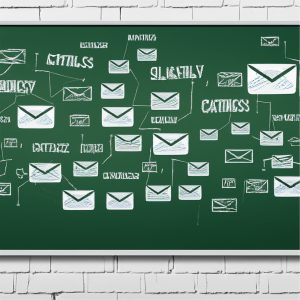Email marketing is an effective way to engage with your customers and build long-term relationships. It allows you to keep your customers informed about your business, products, services, and promotions. But before you can start emailing your customer list, you need to go through a process to ensure that you are doing it right. In this blog post, we will outline the process for emailing your customer list.
Obtain consent from your customers
The first step in emailing your customer list is to obtain consent from them. You should never send emails to people who have not explicitly given you permission to do so. This means that you need to obtain consent from your customers before you start sending them emails. There are different ways to obtain consent, but the most common method is to ask customers to opt-in by filling out a form on your website or checking a box during the checkout process.
Segment your customer list
Once you have obtained consent from your customers, the next step is to segment your customer list. Segmenting your list means dividing it into smaller groups based on common characteristics such as demographics, location, purchase history, or interests. By segmenting your list, you can tailor your emails to the specific needs and interests of each group, increasing the chances of engagement and conversions.
Choose an email service provider
To email your customer list, you need to choose an email service provider (ESP). An ESP is a third-party platform that allows you to create, send, and track your email campaigns. There are many ESPs available, each with its own features and pricing. When choosing an ESP, consider factors such as ease of use, automation capabilities, personalization options, deliverability rates, and customer support.
Create your email campaign
Once you have chosen your ESP, the next step is to create your email campaign. Start by defining your goals and objectives for the campaign. What do you want to achieve with this email? Do you want to promote a product, share a blog post, or announce a sale? Once you have defined your goals, create your email content, including subject lines, headlines, body copy, images, and calls to action.
Test and optimize your email campaign
Before sending your email campaign to your entire customer list, it’s essential to test and optimize it. Testing involves sending your email to a small subset of your list to check for issues such as broken links, typos, or formatting problems. Optimization involves analyzing the results of your test email and making changes to improve the performance of your campaign, such as changing the subject line, adjusting the timing, or adding more personalization.
Send your email campaign
Once you have tested and optimized your email campaign, the final step is to send it to your customer list. When sending your email, be sure to follow best practices such as personalizing your emails, optimizing for mobile devices, and including an unsubscribe link. After sending your email, track your results using your ESP’s analytics dashboard and adjust your strategy accordingly.
In conclusion, emailing your customer list is an effective way to engage with your customers and build long-term relationships. By following the process outlined in this blog post, you can ensure that you are doing it right and maximize the effectiveness of your email marketing campaigns.




